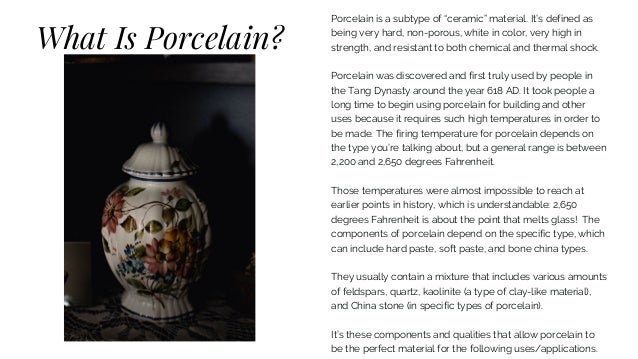4 to 12 used in firing porcelain floor tile china stoneware structural clay products and some refractory materials.
Ceramic melting point fahrenheit.
The ionic and covalent bonds of ceramics are responsible for many unique properties of these materials such as high hardness high melting points low thermal expansion and good chemical resistance but also for some undesirable characteristics foremost being brittleness which leads to fractures unless the material is toughened by.
What is a high melting point.
This method involves heating ceramic powder under a 5000 degree f flame and using compressed gas to spray the coating onto the substrate.
Inorganic rock or slag are the main components typically 98 of stone wool.
Tungsten is the metal that has the highest melting point and it is 3400 degree celsius 6150 degree fahrenheit.
Firstly these metals differ in physical properties because they all belong to different groups.
The temperature equivalent range is approximately 1600 2150f 890 to 1170c.
Ceramics generally can withstand very high temperatures ranging from 1 000 c to 1 600 c 1 800 f to 3 000 f.
Common ceramics include aluminum oxide melting point mp 3720 f titania 3245 f chromia 3450 f and zirconia calcia stabilized around 4870 f and tungsten carbide cobalt 5200 f.
Some metals are also refractory.
However glassmaking involves several steps of the ceramic process and its mechanical properties are similar to ceramic materials.
It creates an explosion of oxygen and acetylene gas at around 6 000 degrees f melting the ceramic and firing it at high speed toward the target substrate.
Mineral wool is made from molten glass stone ceramic fibre or slag that is spun into a fiber like structure.
The temperature equivalent range is approximately 2175 2345f 1180 to 1340c.
Mercury is the metal that has the lowest melting point and it is 39 degree celsius 38 degree fahrenheit in this article we have learned about all the melting points of metals in degree celsius and degree.
Broadly speaking uhtcs are borides carbides nitrides and oxides of early.
For most metals the melting point is around 200 degree celsius whereas for refractory metals the melting point is more than 1500 degree celsius.
The main characteristics and applications of these metals are somehow linked with their high resistance.
Oxygen acetylene powder.

